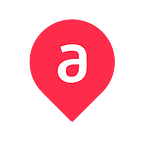atlatec Releases Free High-Definition 3D Map of San Francisco’s Downtown
atlatec Releases Free High-Definition 3D Map of San Francisco’s Downtown
A 3D map of San Francisco’s Downtown/Financial District with inch-perfect accuracy is now available for public use.
Karlsruhe, Germany — Collaboration and sharing of data is a major trend in the autonomous driving space today. Joining Ford, Argo AI, Uber and others in the endeavor to do more together, atlatec now adds its own piece to the puzzle: A 3D map of San Francisco’s Downtown/Financial District with inch-perfect accuracy.
The dataset is free to use for companies, research institutions and all others. It comes with a high richness of annotated assets relevant for autonomous driving or the development of modern ADAS features. (Watch on YouTube: https://www.youtube.com/watch?v=EffEn7JyQyw)
Mapping One of Today’s Mobility Hotspots
atlatec is headquartered in Germany, but the US is an important market for the 6 year old company that employs 30 people: “Virtually all of our customers from all over the world — OEMs, suppliers and others — have some kind of engineering presence in the Bay Area or Silicon Valley”, says Dr. Henning Lategahn, atlatec’s founder and CEO. “Add to that the local players in the autonomous driving space, such as Waymo, Uber, Lyft and smaller startups and you’re definitely looking at one of the world’s foremost hotspots for future mobility.”
The reason for atlatec to release a map of a city in the middle of this R&D hub is twofold: For one, the exposure is a given and the local environment is rich with customers and potential future partners. But that also means fierce competition — and an audience that knows exactly what it wants and has the competence to be very critical about data quality.
“The Bay Area is of course a highly competitive marketplace — that’s another reason we chose to release this particular map”, says Tom Dahlström, Business Development Manager at atlatec.
“We want to put our data out there in order to really put it to the test: Anyone can download it for free and either plug it into their simulator or run their perception systems and self-driving algorithms on it. We’re confident the map will stand up to state-of-the-art expectations and look forward to being able to further prove ourselves to our current customers and new ones.”
Technological Challenges and Solutions
Downtown, San Francisco is an ambitious target for an HD mapping company. The area is highly complex, cluttered with intersections and crossing streets which means lots of sensory overlap. In order to provide the best possible accuracy for all points in a map, atlatec’s drivers travel the same area multiple times: This results in lots of overlapping sensor data that needs to be brought together into one consistent model.
Another challenge is the abundance of high-rise buildings and the resulting “urban canyons” downtown: Lots of tall buildings around the streets mean lots of reflections for the GPS signal, making it hard to consistently pinpoint a survey vehicle’s exact location and position over time — an essential requirement for precise survey work.
Both challenges are a good fit for atlatec’s approach to mapping, which differs from other providers in the field: “First of all, we don’t have to rely on GPS to pinpoint our drivers’ locations and trajectories”, says Henning Lategahn. “Our sensor setup is built on stereo camera vision — both to capture the environment around a driver’s car and to track its movement and pose frame by frame. This allows us to maintain a high degree of accuracy even in areas with low or no GPS reception.”
The reliance on camera data rather than high-end IMUs (Inertial Measurement Units such as gyroscopes) or LiDAR, otherwise popular in HD mapping, also makes it easier for atlatec to handle the sensory overlap and achieve highly consistent Loop Closure, as the merging of multiple sensor inputs is called: “We drive on every lane at least once”, says Tom Dahlström. “This means you bring the sensors as close as possible to every asset in the environment, which is good for accuracy — but you also generate lots of overlapping imagery.”
Interactive view to zoom and scroll through (desktop recommended):
http://remote.atlatec.de:8080/2019-11-08-San-Francisco/
An urban environment as complex as San Francisco makes for a good benchmark to determine whether these challenges are met. The generation of a single, highly consistent 3D model from all these inputs is handled automatically, using processing software that atlatec has developed and perfected over the years. “Our software is what makes us unique: It allows us to use a very scalable, low-cost sensor setup instead of highly specialized and expensive survey vehicles”, says Henning Lategahn.
Indeed, atlatec owns zero vehicles: The company’s self-contained “sensor pods” measure only 60 x 40 x 10 centimeters and weigh 12 kilograms, making them easy to ship or allowing a driver to take one on a plane to the desired location anywhere in the world. Once arrived, the pod can be mounted on a random rental car in under 10 minutes and data acquisition can begin.
Some of these pods are permanently stored in areas where atlatec meets frequent operational demand, such as San Francisco, Detroit or Tokyo: Since operation of the pods is simple, local drivers can be commissioned to expand coverage or update sections that have undergone roadwork. Several more pods remain ready at atlatec’s head office for quick deployment anywhere once a new project starts.
Interested parties can download the San Francisco map in a range of formats from the atlatec website. As a preview of the data consistency, the top-view images of the road network are available for interactive scrolling and zooming in most desktop browsers here. For further information, please reach out to atlatec via email or on LinkedIn.
Originally published at https://news.atlatec.de.
